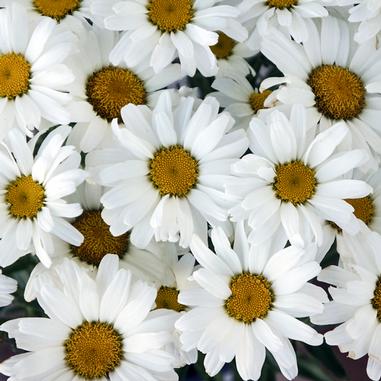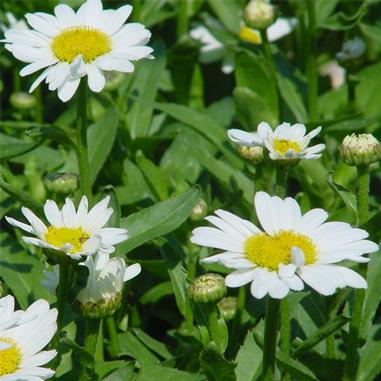Spilling over the side of a rock, the silken web rippled in the wind, like trickling water, precariously lit by the gilded rays of the setting sun. The fiery Daylilies seemed to snap close while the ornamental grasses swayed rhythmically as the sun sank over the horizon. The wind continued to whip and snarl, but the delicate web remained, tethered to the rock, resolute and now concealed in the cloak of darkness.
Nature holds many secrets, and when we take the time to see, really see and listen, many wonders and secrets are revealed, so unlock that gate and listen to your plants and lawn. They’re constantly communicating with us, so we must interpret their needs through observation, a little bit of knowledge and some patience.
Insufficient Light
Plants that are not getting enough sunlight suffer from etiolation, or weakening, and start to look leggy and spindly, with the internodal space (area between leaves) appearing unusually large. Some plants may look pale and sickly while others may die. To correct the problem, invite more sunlight, perhaps by pruning trees in the area and/or moving the plants to an area that receives more sun. You can always swap out the sun lovers for more shade tolerant plants
Excessive Light
Not all plants need lots of sunlight. In fact, some plants prefer partial to full shade. When these plants experience too much sun, they may look pale, scorched, withered, and burned. Consider moving these plants to a shadier area or replace them with sun-loving plants.
Poor Drainage
Some plants don’t mind having wet feet, while many prefer well-drained soil. The latter, in wet conditions, may yellow, brown, wilt and eventually die. To rectify, correct the drainage issue and/or look to plants that are tolerant of wet conditions.
Drought
Drought stricken plants may warp, wither, brown and develop brown tips and yellowing leaves. Water accordingly to resolve, or replace with drought-tolerant plants.
Chemical Damage
Herbicides and fertilizers can both cause discoloration, twisted, gnarled stems and foliage, brown spots and death. Most likely, plants will need to be replaced, depending on the severity of the damage. Take great caution when spraying, and spray when winds are minimal, preferably non-existent.
Infestation
Insects can cause a whole host of problems, resulting in twisted, distorted foliage, holes, browning, bumps, discoloration, streaks, mottling, etc., and sometimes death. Some plants are known to have particular insect issues, so treat accordingly. When in doubt, do a little research.
Nutrient Deficiencies
Plants may manifest nutrient deficiencies with yellow veins and/or pale leaves. Fertilize accordingly per the plant’s specific requirements.
Fungal Infections
Plants may discolor or have spotted or mildew leaves with a powdery film. Treat the fungus accordingly with fungicides.
Creeping Charlie & Violets
Shady, weak lawns with poor drainage often provide the perfect environment for Creeping Charlie and Violets. Try increasing the amount of sunlight by pruning. Post-emergent broadleaf herbicides can be used when weeds are actively growing. If present in a flower or shrub bed, you can dig out the weeds. Just be sure you’re pulling up the entire root and stem, or they will grow back.
Rust in Lawn
Rust typically develops in slow growing lawns, which can be caused by many factors, including insufficient water and nutrients, namely nitrogen. Turf may appear red, yellow or brown, and when walking through the affected areas, the powdery spores often stain your shoes. Look to proper lawn maintenance techniques, like responsible and effective watering, proper mowing height and scheduled fertilizations.
So the next time you stroll through your yard, look and listen to what your plants and lawn are trying to tell you. If you pay close attention on a regular basis, most problems can be mitigated. When in doubt, reach out to Sweeney’s, and we’ll help diagnose and fix the issue, so you and your lawn and garden can simply enjoy each other’s company.
Plant of the Week


Photos of Becky Shasta Daisy courtesy of Midwest Groundcovers
Becky Shasta Daisy
Large, downy white flowers with bright yellow centers bloom atop sturdy, upright stems from June – September. Prefers sun and moist, well-drained soil. Grows 24-36″ tall and 18-24″ wide. Drought and salt tolerant. Attracts butterflies and other pollinators. Rabbit resistant.
“Nature is man’s teacher.
She unfolds her treasure to his search,
unseals his eye, illumes his mind,
and purifies his heart;
an influence breathes from all the sights and sounds
of her existence.”
-Alfred Billings Street
Best wishes,
Kim Sweeney

This article reminds me of the fact that we are here temporarily and therefore, simply “stewards” of our environment.
Thanks for the comment, and you are absolutely correct. Life is short, and nature rules all, so we must use our time wisely and responsibly with compassion and respect for all living things.